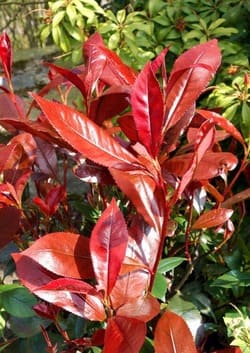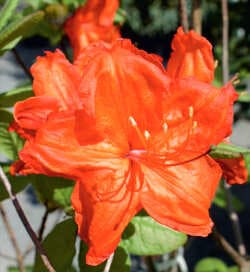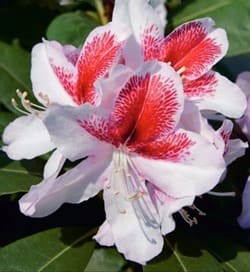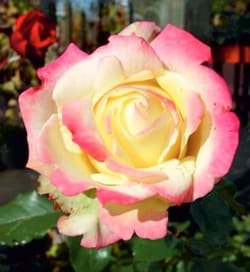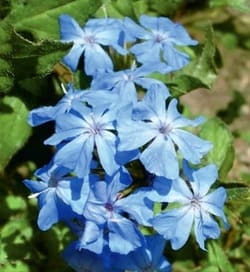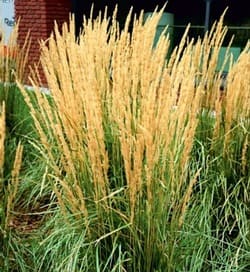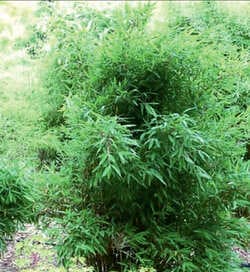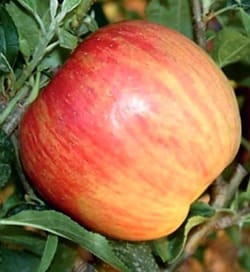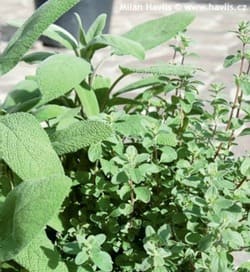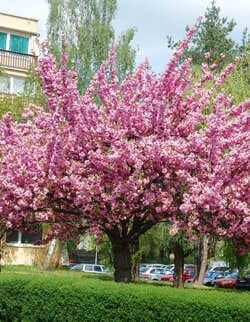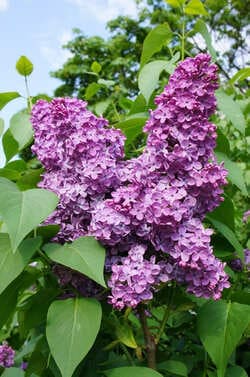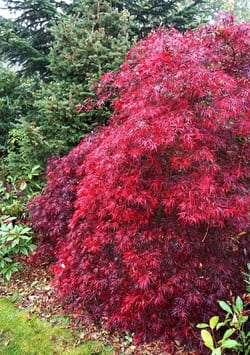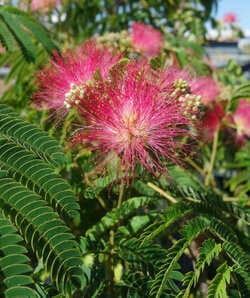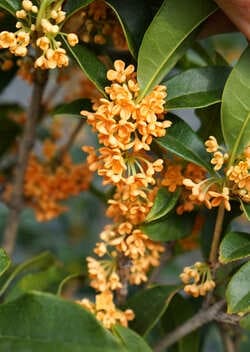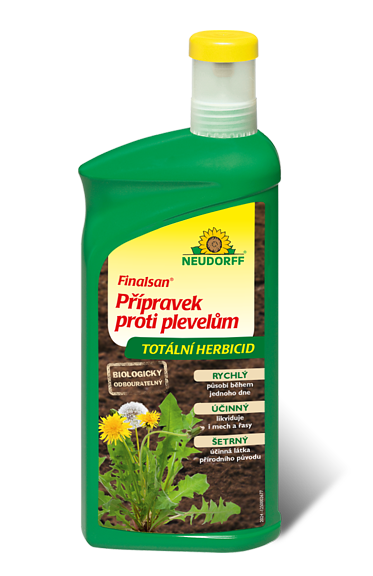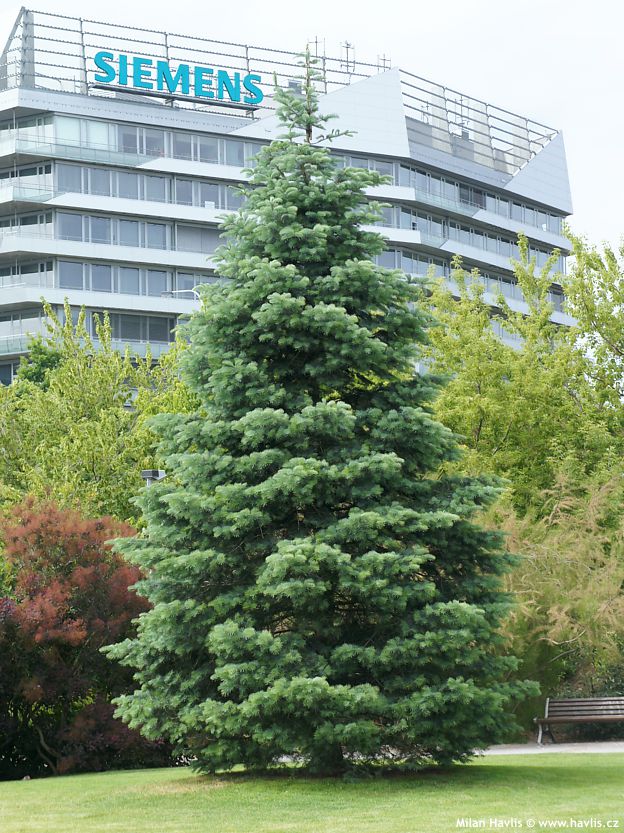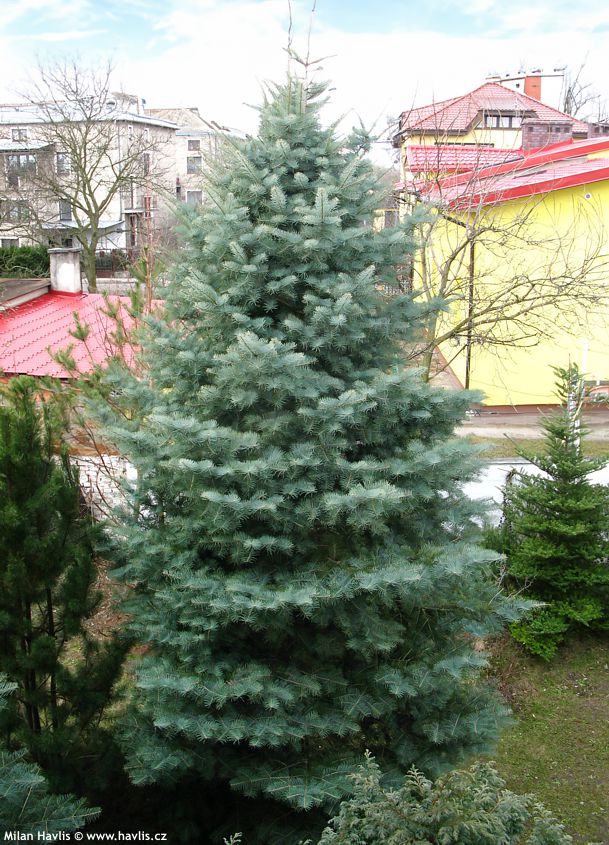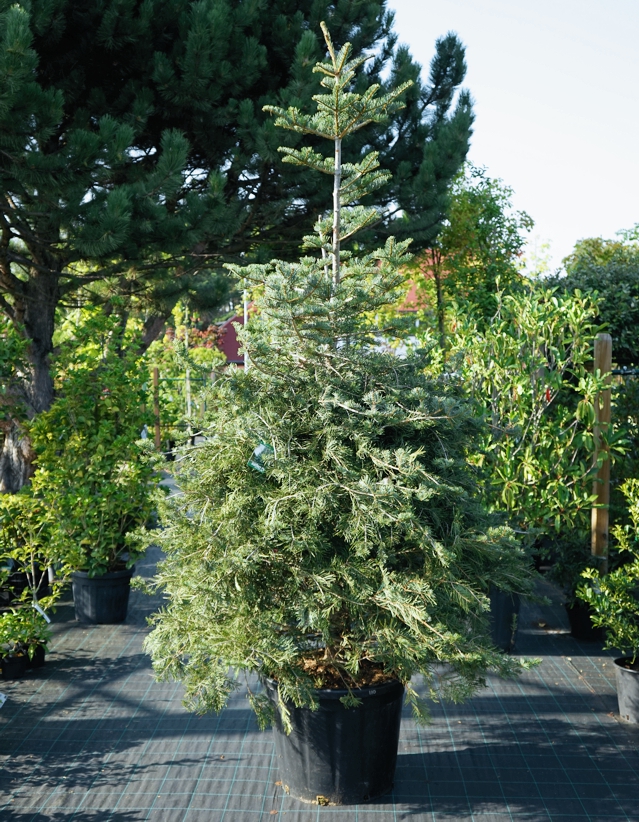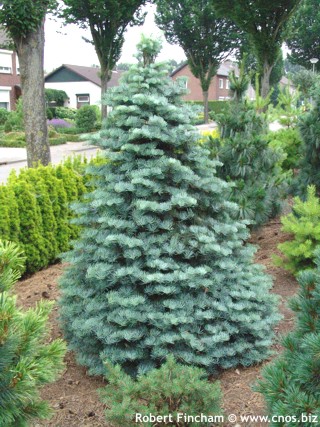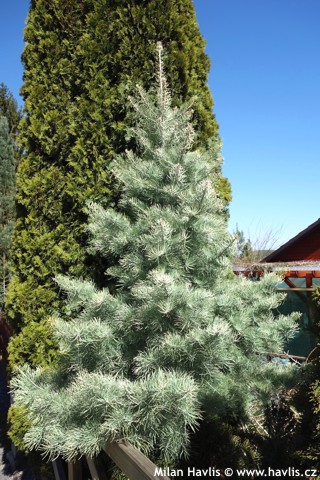Abies concolor white fir
White fir is a very popular conifer in Central European landscape. Its natural habitat extends from the southwestern United States to northern Mexico where, especially in warmer areas, it was reported as somewhat invasive when it forms monocultures. However, it is more often found in mixed forests with diverse species. It is demanded and cultivated for its striking color. Growers in nurseries pay special attention to selecting the best-coloured seedlings since it is often propagated by seeds and plants grown from seeds vary by their traits, especially colour. Numerous varieties have been named offering not only various needle colour but also growth rate, habit, or mature size.
The needles of the species of white fir can vary from dark green with only light grey frosting to silvery blue-green. This variation is given by propagation by seeds which results in plants that differ slightly one by one. Therefore, it's a good idea to examine closely the tree you are buying when it comes to the right colour because you will be looking at it for the rest of your life as white fir is long-lived (200-300 years), much longer than a human. The needles are 4-6 cm long, upright, flattened, soft and very pleasant to touch.
It grows about 20-30 cm per year into a nice and symmetrical, narrowly cone-like habit with tiered to slightly ascending branches. Although it is a tall conifer when mature, in normal-sized gardens its slow growth rate enables pruning which helps you maintain a desired size. For trees where regular trimming is not expected, it is necessary to choose a location where its mature size will not interfere with other plants close by.
White fir is tolerant of a wide range of soils, it will grow in almost any well-drained soil from slightly acidic to slightly alkaline, preferably moist but never waterlogged. In deep, fertile soil it will grow faster and have stronger and deep roots, whereas in locations with heavy clay, rock, or other unsuitable material lower in the ground it will have a shallow root system. Because of this, it is often described as a species prone to uprooting, but it is very theoretical. In fact, it is much more stable than for example common spruce. Once established it copes well with long periods of drought and heat. Plant it in full sun or partial shade. Hardy to approx. -40 °C. (USDA zone 3).
Last update 07-01-2010; 13-02-2024
Goods are shipped all over Europe. For Russia and U.K. and for further details please read about SHIPPING OPTIONS HERE.
Are you interested in a serious discount for orders NOV-FEB? Check your options here.
THE PRICES INCLUDE VAT of 15%. For quick conversion you can use 1 CZK = approx. 0.04 EUR
- STANDARD QUALITY - Plants of this group are 1st class quality with number of branches and overall density adequate to their size and age, considering they were container grown.
- DE LUXE QUALITY - This label guarantees a luxurious quality of manually selected plants that, compared to their height and age, are exceptionally dense and beautiful.
- EXTRA - These plants are usually mature and bigger specimens with exceptional overall appearance.
- STANDARD (as described in the plant form) means a tree with a trunk of 190-210 cm and a crown at the top, unless specified differently. The commercial size for trees is their girth measured in the height of 1m from ground.
- HOBBY - These plants are of the same quality as our standard-quality plants but younger and therefore cheaper.
- SHRUB - a woody plant with branches growing bushy from the ground level.
- HALF-STANDARD or MINI-STANDARD - a small tree with shorter trunk, its size is usually specified.
- FEATHERED - These are trees with branches growing already from the base of the trunk and up along the stem.
- GRASSES and PERENNIALS - Sizes given usually read the diameter of the pot or the clump, as specified.









